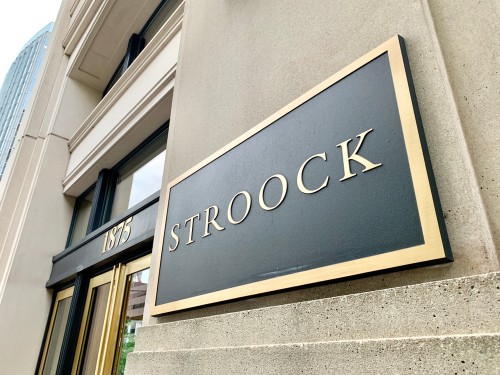Where did Stroock go wrong? And what is it doing right? Dissolution spurs critiques

“Stroock had become progressively more wobbly in the last couple of years, highlighted by high-profile partner defections and an inability to come to terms with another firm for a merger once it became clear the firm would need one to survive,” Law.com reports. Image from Shutterstock.
Before Stroock & Stroock & Lavan announced plans to dissolve “at the appropriate time,” the law firm appeared to be readying for an "orderly dissolution" that does not put partners at risk.
“There are signs that Stroock’s leaders have been working behind the scenes to try to prevent the worst-case scenario when a law firm collapses: partners facing personal liability for its debts,” Bloomberg Law reports.
The Bloomberg Law article said an orderly dissolution involves a two-step process: getting all the partners to leave before the dissolution and staying out of bankruptcy court.
Partners will get advance notice before the firm officially dissolves, allowing them to leave before it happens. That means that creditors could have a more difficult time recovering fees for ongoing work, according to the article.
Creditors can still force a dissolved firm into bankruptcy. The bankruptcy trustee would try to recover compensation received by partners after the date of insolvency. To keep Stroock out of bankruptcy, its executive committee would have to convince creditors that they will be paid from remaining revenues, Bloomberg Law explains.
While Stroock appears to be taking positive steps for the dissolution, there were missteps in the past, according to an article by Law.com that partly relies on anonymous sources.
“Stroock had become progressively more wobbly in the last couple of years, highlighted by high-profile partner defections and an inability to come to terms with another firm for a merger once it became clear the firm would need one to survive,” Law.com reports.
“Each one of Stroock’s challenges—a troublesome pension obligation that was removed too late, waves of large partner departures, poor merger negotiations and a burdensome accounting system—would hobble any law firm. But Stroock faced them all, contributing to the fall of a 147-year-old firm.”
The first blow happened in March 2022, when Stroock lost 43 restructuring lawyers to Paul Hastings. In early July, Stroock announced that merger talks with Nixon Peabody had ended.
Then in late July, Stroock lost 27 lawyers to Steptoe & Johnson. In August, Stroock announced that it had authorized a buyout of its pension obligations to make itself a more attractive merger partner.
Partners authorized a future dissolution Oct. 24. Then came announcements that Stroock and Pillsbury Winthrop Shaw Pittman had ended merger talks, and that more than 30 Stroock partners were joining Hogan Lovells. An internal Stroock email said the Hogan Lovells move “will offer the best opportunities and growth potential for the most members of our firm.”
The best time for a firm to merge is when it isn’t necessary for survival, according to a separate Law.com story. Problems can happen if partner holdouts nix the deal. There are more likely to be objections from low-performing partners who are fearful of what a merger could mean, said Lisa Smith, a princiapl at Fairfax Associates, who spoke with Law.com.
Kent Zimmermann, a consultant at the Zeughauser Group, told Law.com that firms should “manage to the interest of the highest performing partners you can least afford to lose,” and that means a more flexible compensation system.
Zimmermann speculated that Stroock leadership likely failed to manage the restructuring group’s needs, instead allowing “rate-challenged partners to throw merger talks with several firms off track.”
Zimmermann pointed to “common threads” of weakening and destabilizing firms in the other Law.com article.
“Those include a lack of size, waning financial performance and a lack of flexibility on compensation relative to their competitor peers for talent and clients,” Zimmermann said. “On their own, none of those will cause a firm to fail. But together, they cause significant problems.”



